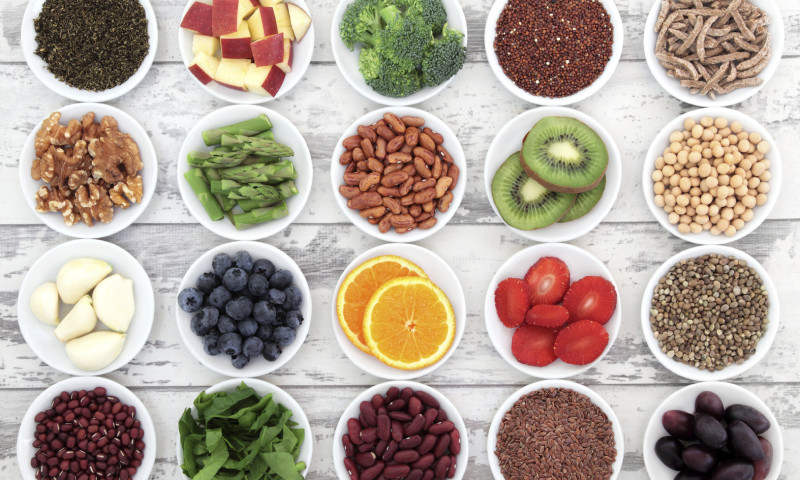Chicken, tacos, spaghetti and fries…what’s on your plate and how do you make sure it’s healthy? This seems like a simple task, but with so many options out there, how do you know what’s right?
Tips for Building a Balanced Meal
It can be tricky to find the balance between healthful options, tasty foods and cooking ease — but with the right plan, this can all work out well!
Start with Protein
This body-building nutrient in food is made up of amino acids and is necessary in cell structure and function (like building muscle). It also keeps you feeling full between meals. Protein-rich foods include meats such as lean chicken, fish and beef. Other protein-rich foods include low-fat dairy such as yogurt, cheese, cottage cheese and beans.
Proteins should be incorporated into your daily meal plan. How much? A good rule of thumb is to fill 1/4 of your plate up with lean protein choices. Try these:
- Lemon pepper baked fish
- Spicy ground taco meat
- Cottage cheese
- Turkey pepperoni and cheese
- Ham and cheese lunch meat roll-ups
Fill-up on Fruits and Vegetables
Oh, yes… carrots, greens, apples and pears (just to name a few) provide a variety of nutrients. Choose a variety of colors each day to provide different nutrients your body needs. These fruits and veggies are lower in calories, high in fiber and packed with nutrition!
How much? Aim for half of your plate to be filled with these items. Think about these:
- Spinach salad
- Broccoli slaw
- Steamed carrots
- Fresh fruit salad
- Chopped watermelon
Add Some Good Carbs
Despite what many people think, carbohydrates aren’t bad if you choose the right kind. And don’t forget — your body needs them for energy! Choosing whole grain pasta, brown rice and quinoa can be a great way to add good carbohydrates to your plan.
When choosing a carbohydrate, watch your portions. Aim to fill 1/4 of your plate with whole grain carbohydrates and you will be set! Avoid white pastas, white rice and processed foods.
- Quinoa salad
- Whole grain pasta
- Whole grain tortillas
- Brown rice
- Whole grain bread
Let’s Recap:
Aim for 1/4 a plate of protein, 1/4 carbohydrates and 1/2 fruits and veggies. This all adds up to a full plate, and a balanced one to top it off! There are some things that don’t fit on your plate such as sweets, desserts and fried foods. However, this doesn’t mean they are to never be eaten — just choose them sparingly and focus on your healthy plate. Use this model for a healthy plate and a healthy lifestyle for years to come.
 About the Author:
About the Author:
Sarah Muntel, RD, is the Bariatric Coordinator at Community Bariatric Surgeons in Indianapolis, IN. She has 15 years of experience working with bariatric patients and loves to watch people as they change their lives and improve their health. Her favorite part of her job is her weekly support group. In her free time, Sarah enjoys spending time with her husband and three children.





